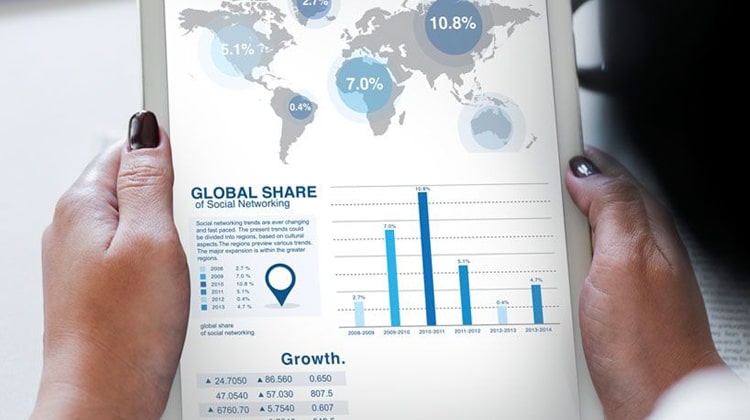
Navigating Pharmaceutical Product Lifecycle Management And Regulatory Compliance: Strategies For Success
Pharmaceutical Product Lifecycle Management (PLM) is a strategic approach to managing the lifecycle of a pharmaceutical product from inception through development, market introduction, growth, maturity, and decline. Effective PLM can enhance a company's ability to innovate, ensure regulatory compliance, optimize processes, and extend the profitability of its products. Simultaneously, maintaining rigorous pharmaceutical regulatory compliance is paramount to ensure patient safety, regulatory adherence, and industry integrity. This blog explores the key stages and strategies involved in pharmaceutical PLM and the emerging trends and challenges in regulatory compliance.
Key Stages and Strategies in Pharmaceutical PLM
Discovery and Development
The first stage in the lifecycle involves the discovery of new compounds and the development of potential pharmaceutical products. This phase includes:
- Research and Development (R&D): Identifying and synthesizing new drug candidates.
- Preclinical Testing: Evaluating the safety and efficacy of new compounds through laboratory and animal testing.
- Clinical Trials: Conducting rigorous testing in human subjects across multiple phases (Phase I-IV) to ensure safety, efficacy, and optimal dosing.
Strategies:
- Invest in advanced research technologies like AI and machine learning to accelerate discovery.
- Collaborate with academic institutions and research organizations for innovative approaches.
- Implement robust project management tools to streamline R&D processes.
Regulatory Approval
Securing approval from regulatory authorities (e.g., FDA, EMA) is critical for bringing a new drug to market. This phase includes:
- Submission of Data: Providing comprehensive data from preclinical and clinical trials.
- Review Process: Engaging with regulatory bodies to address queries and provide additional information.
- Approval: Gaining market authorization to commercialize the product.
Strategies:
- Maintain clear and ongoing communication with regulatory bodies.
- Develop thorough and precise documentation to facilitate the review process.
- Stay updated on regulatory guidelines and changes to ensure compliance.
Market Introduction
Launching a new pharmaceutical product involves extensive planning and execution to ensure successful market penetration. This phase includes:
- Marketing and Sales Strategy: Developing a comprehensive plan to promote the product to healthcare professionals and consumers.
- Distribution: Establishing efficient supply chain networks to ensure product availability.
- Post-Marketing Surveillance: Monitoring the drug’s performance and safety in the real world.
Strategies:
- Utilize digital marketing and social media to reach a broader audience.
- Partner with key opinion leaders and healthcare providers to build credibility.
- Implement pharmacovigilance systems to track and address any adverse events promptly.
Growth and Maturity
As the product gains market acceptance, the focus shifts to maximizing its market potential and managing competition. This phase includes:
- Market Expansion: Exploring new markets and indications for the drug.
- Lifecycle Extension: Introducing new formulations, dosage forms, or combination products.
- Competitive Strategy: Differentiating the product from competitors through branding and unique selling propositions.
Strategies:
- Conduct ongoing market research to identify new opportunities and threats.
- Invest in continuous improvement and innovation to enhance the product’s value.
- Develop strategic partnerships and alliances to strengthen market presence.
Decline and Exit
Eventually, the product may face declining sales due to patent expiration, market saturation, or the introduction of superior therapies. This phase includes:
- Product Optimization: Implementing cost-reduction measures to maintain profitability.
- Lifecycle Management: Planning for a strategic exit or transition to generic production.
- Knowledge Transfer: Documenting and transferring knowledge for future reference and use.
Strategies:
- Explore licensing agreements or sales to extend the product’s lifecycle.
- Diversify the product portfolio to reduce dependency on declining products.
- Prepare a clear exit strategy to minimize financial and operational disruptions.
Global Regulatory Strategies
Navigating impurity challenges in pharmaceuticals requires a comprehensive global regulatory strategy. A global pharma regulatory strategy involves understanding the regulatory requirements in each market, developing a regulatory compliance plan, and ensuring that the appropriate regulatory submissions are made. These can be further divided as follows:
Regulatory Intelligence
Regulatory intelligence is a critical component of a global regulatory strategy. Regulatory intelligence involves monitoring regulatory changes, identifying potential regulatory risks, and developing strategies to mitigate these risks. Regulatory intelligence helps organizations stay ahead of the curve.
Regulatory Submissions
Regulatory submissions involve submitting the appropriate regulatory documentation to the regulatory authorities in each market. The documentation must be accurate, complete, and comply with the regulatory requirements in each market.
Regulatory Compliance Plan
A regulatory compliance plan ensures that organizations are compliant with the regulatory requirements in each market and reduces the risk of regulatory violations.
Conclusion
Effective pharmaceutical PLM is essential for navigating the complexities of drug development, regulatory compliance, and market dynamics. By implementing strategic management practices at each stage of the product lifecycle, pharmaceutical companies can optimize their operations, sustain growth, and deliver valuable treatments to patients worldwide. Embracing innovation, maintaining regulatory vigilance, and focusing on market needs are critical to the successful lifecycle management of pharmaceutical products.
Simultaneously, maintaining rigorous regulatory compliance is crucial to ensure patient safety and industry integrity. By staying ahead of regulatory trends and challenges and adopting comprehensive global regulatory strategies, pharmaceutical companies can navigate the complex regulatory landscape with confidence, ensuring that their products remain safe, effective, and compliant.







